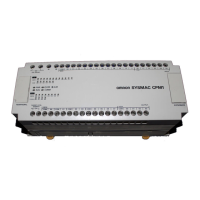496
Glossary
data disk A floppy disk used to same user programs, DM area contents, comments, and
other user data.
data length In communications, the number of bits that is to be treated as one unit in data
transmissions.
data link An automatic data transmission operation that allows PCs or Units within PC to
pass data back and forth via common data areas.
data link area A common data area established through a data link.
data movement instruction An instruction used to move data from one location in memory to another. The
data in the original memory location is left unchanged.
data sharing The process in which common data areas or common data words are created
between two or more PCs.
data trace A process in which changes in the contents of specific memory locations are re-
corded during program execution.
data transfer Moving data from one memory location to another, either within the same device
or between different devices connected via a communications line or network.
debug A process by which a draft program is corrected until it operates as intended. De-
bugging includes both the removal of syntax errors, as well as the fine-tuning of
timing and coordination of control operations.
decimal A number system where numbers are expressed to the base 10. In a PC all data
is ultimately stored in binary form, four binary bits are often used to represent
one decimal digit, via a system called binary-coded decimal.
decrement Decreasing a numeric value, usually by 1.
default A value automatically set by the PC when the user does not specifically set an-
other value. Many devices will assume such default conditions upon the appli-
cation of power.
definer A number used as an operand for an instruction but that serves to define the in-
struction itself, rather that the data on which the instruction is to operate. Defin-
ers include jump numbers, subroutine numbers, etc.
destination The location where an instruction places the data on which it is operating, as op-
posed to the location from which data is taken for use in the instruction. The lo-
cation from which data is taken is called the source.
differentiated instruction An instruction that is executed only once each time its execution condition goes
from OFF to ON. Non-differentiated instructions are executed for each scan as
long as the execution condition stays ON.
differentiation instruction An instruction used to ensure that the operand bit is never turned ON for more
than one scan after the execution condition goes either from OFF to ON for a
Differentiate Up instruction or from ON to OFF for a Differentiate Down instruc-
tion.
digit A unit of storage in memory that consists of four bits.
digit designator An operand that is used to designate the digit or digits of a word to be used by
an instruction.
DIN track A rail designed to fit into grooves on various devices to allow the devices to be
quickly and easily mounted to it.

